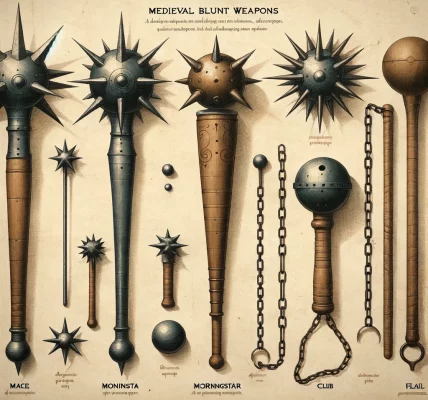The claymore, a double-edged sword with a distinctive basket hilt, is a legendary weapon associated with the Scottish Highlands. Its imposing size and formidable appearance have made it an iconic symbol of Scottish culture and history.
Origins and Evolution
The claymore’s origins can be traced back to the 15th century, when Scottish warriors began adopting longer, straighter swords influenced by continental European designs. These swords were often referred to as “claymores” or “claidheamh mòr,” which translates to “great sword” in Scottish Gaelic.
Over time, the claymore evolved into a more standardized weapon with a longer blade and a distinctive basket hilt, which provided protection for the hand. The basket hilt was typically made of metal and was often decorated with intricate designs or heraldry.
Characteristics and Use
The claymore was primarily a weapon of war, used by Scottish Highlanders in battles and skirmishes. It was a formidable weapon, capable of delivering powerful blows. The long blade and basket hilt made it well-suited for both cutting and thrusting attacks.
However, the claymore was not just a weapon of war. It also served as a symbol of status and authority, and was often carried by clan chiefs and other important figures. The claymore’s imposing size and appearance made it a powerful statement of power and prestige.
The Claymore in Popular Culture
The claymore has been featured in numerous works of fiction, including literature, film, and video games. It is often associated with Scottish warriors and is seen as a symbol of bravery and strength. The claymore’s iconic appearance has made it a popular subject for collectors and enthusiasts.
The Claymore Today
While the claymore is no longer used as a weapon in modern times, it remains an important symbol of Scottish culture and history. It is often featured in Scottish Highland games and is a popular subject for collectors and enthusiasts. The claymore’s legacy lives on, a testament to its enduring power and cultural significance.




